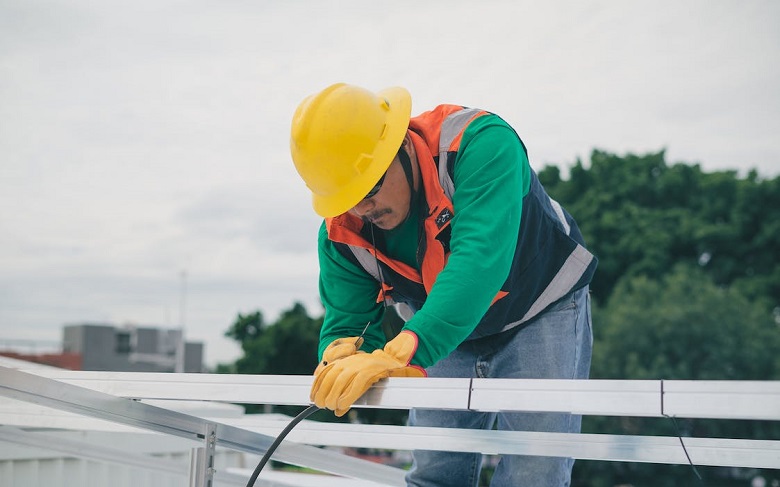In today’s diverse working environment, many individuals find themselves in roles where they either work alone or are exposed to potential physical threats. While the nature of their jobs can be rewarding, they also come with inherent risks.
Recognising these dangers and implementing appropriate safety measures is essential to safeguarding the well-being of these employees.
Dangers Faced by Lone Workers:
Lone workers, by the nature of their jobs, operate without the immediate support of colleagues or supervisors. This places them at a unique risk in several scenarios:
Medical emergencies: If they suffer an injury or a health issue, there might be nobody around to offer immediate assistance or call for help.
Accidents: In industrial or construction environments, accidents such as slips, trips, or machinery malfunctions can be life-threatening if not immediately addressed.
Physical threats: In certain professions, such as late-night retail or security, lone workers may be more vulnerable to robbery, assault, or other forms of violence.
Dangers Faced by Workers Threatened by Physical Abuse:
Workers in specific sectors, such as healthcare, law enforcement, social work, or those in customer-facing roles, often face threats of physical abuse due to:
Aggressive or distressed individuals: For instance, healthcare workers might deal with patients experiencing mental health crises or under the influence of drugs, leading to unpredictable behavior.
High-stress situations: Law enforcement and security personnel often find themselves in volatile situations where tensions can quickly escalate.
Retaliation: In jobs like social work, workers may face threats from disgruntled family members or other involved parties.
Measures Employers Can Take:
- Comprehensive Training:
Equip employees with de-escalation techniques, self-defense training, and first aid skills. Training should also include recognising potential threats and understanding when and how to withdraw from a situation safely.
- Regular Check-ins:
For lone workers, implement a system of regular check-ins. If an employee misses a scheduled check-in, this could trigger an alert for further action.
- Personal Alarms:
Equip workers with personal alarm systems. Specialist lone worker alarms or duress alarms can be activated in emergencies, signaling the need for immediate assistance. Devices may also offer forms of GPS tracking to help assistance to be directed to the worker when they request it.
- Surveillance and Monitoring:
Install CCTV cameras in vulnerable areas. The presence of cameras can act as a deterrent, and recorded footage can be useful for investigations if incidents occur. In addition, specialist lone worker monitoring devices can help to keep track of where workers are and ensure that if they require assistance they can be reached swiftly.
- Safe Work Environments:
Ensure that workspaces are well-lit, have clear exit routes, and are free from potential hazards. For those at risk of violence, consider installing barriers or panic buttons.
- Support Systems:
Establish employee support programs where workers can discuss concerns, access counseling, and receive advice on managing work-related stress.
- Restricting Public Access:
For jobs facing potential threats from the public, consider implementing access controls or requiring appointments.
- Buddy Systems:
Whenever possible, ensure that employees work in pairs or groups, especially during late hours or in high-risk areas.
- Clear Protocols:
Create and communicate clear protocols for reporting and responding to threats or incidents. Encourage an environment where employees feel comfortable reporting concerns without fear of reprisal.
- Continuous Assessment:
Regularly review and assess safety measures, taking feedback from employees and adapting to changing circumstances or new information.
In conclusion, the safety of lone workers and those exposed to threats of physical abuse is paramount. By understanding the risks and implementing preventative and responsive measures, employers can significantly reduce the likelihood of harm and ensure that their workforce remains secure and supported.
Employers have a legal duty of care to ensure the safety and well-being of their employees, a responsibility enshrined in many countries’ occupational health and safety regulations. This duty becomes especially crucial for those who work alone, as their isolation can amplify potential risks. Legally, employers must take all reasonably practicable steps to protect lone workers from harm, just as they would for other employees. As we have seen, this involves identifying potential hazards linked to lone working, assessing risks, and implementing suitable control measures. Failure to fulfill this duty of care can result in legal repercussions, including fines and, in severe cases, imprisonment. Moreover, neglecting this duty can also expose employers to potential civil liability should an employee suffer harm due to inadequate safety provisions.




